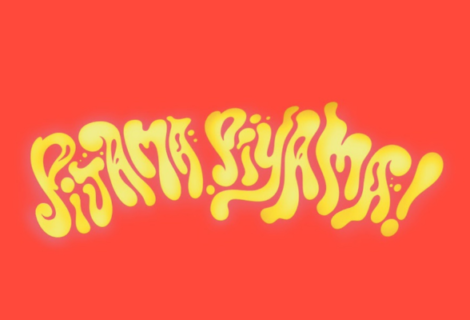Cuba is Not Its Beaches or Its Whores
Cuba is not its beaches or its whores. It’s not the sadness of its streets or romanticism of the “máquinas” (cabs), the Moskovich, Lada, or the American classics with loud hot-wired sound systems. It’s not the elders’ acquiescence or the youngsters’ indifference, nor an amusement park where you can throw a tantrum because you paid your ticket and feel privileged. It’s not a Safari or your local farmers market. Not all Cubans are panhandlers who want to jip you in some transaction, nor do all its women ask for copper in exchange for their affection. And if it weren’t for the inescapable propaganda, one could say that at this point, it’s not even the revolution.

HAVANA
When you ask around for tips before you escape to The Princess of the Sea, you get some recurring ones (check out Phoenikerx’s Guide to Cuba), some are completely ambiguous, and the rest you find there on the Wawa, on your way to 26th St.
La Phoenikera.com wanted to learn about Cuba, not through documentaries, books, essays, other people’s recollections, or the propaganda that some of the bearded commander’s adepts still propagate.
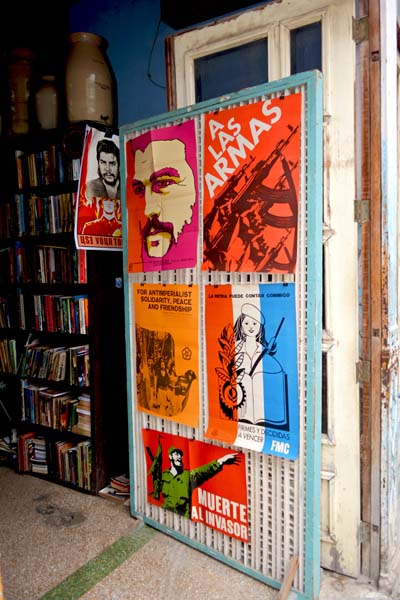
Photo: LaPhoenikera.com
We wanted to understand, at least in principle and thanks to the locals, the key to the island, its life tune, and how people create art when they have so many obstacles.
The Cuban counterculture is not always counterrevolutionary, but it started the moment the revolution’s gravy wasn’t equally rationed among everyone.
When power disproportionally swings toward one side, allowing a tiny group to fatten their wallets, it inevitably generates a counter-narrative. This alternate culture evolves on par with tyranny only to maim it.
When you see classic cars from the U.S., the mixture of architecture, when you get the feel of the city and indulge in some ruin porn just for a bit, you can’t stop drawing parallels between Detroit and both cities’ decay. Maybe these cities were downturned for opposing reasons, maybe not so much. It’s funny to think that some cars were manufactured in Motor City while the revolution was still in its infancy.

Photo: LaPhoenikera.com
In Havana, like in Detroit, people survive despite their circumstances, and both have been neglected by basically everyone around them. Their artists, like the rest of the population, have to hustle. They score art supplies through the support of friends or institutions/organizations from other countries.
Taller Comunitario José Martí
This workshop/studio/gallery on Paseo del Prado (Old Havana) witnesses that conversation all the time: where the fuck do we get the supplies to work with? The work they do with the youth is partly thanks to donations, and for the artists in this collective, everything is a possibility. Such is the case of 2+2=5? (Fabián López Hernández), who sometimes draws his hooded character on the brown napkins everybody gets when they order a pizza, masareal (guava panetela), and snow cones, or in some shady branches of Pío Pío (a fried chicken joint) that don’t carry the fancy card boxes they usually give out.

Photo: Taller Comunitario José Martí
Besides a gallery where the audience can interact with the artists and their work or take a class on Saturday mornings, Taller Comunitario provides an exploration channel for youth curious and interested in learning visual arts or theater.
Hueso Duro (Miguel Ángel Hernández), a project member, tells us the collective participates in cultural exchanges, and several of its members have had shows overseas, like in the case of experimental photographer Yomer Montejo Harrys.
These travels have secured the support of friends and organizations worldwide, which periodically collaborate with them by giving workshops and providing art supplies.
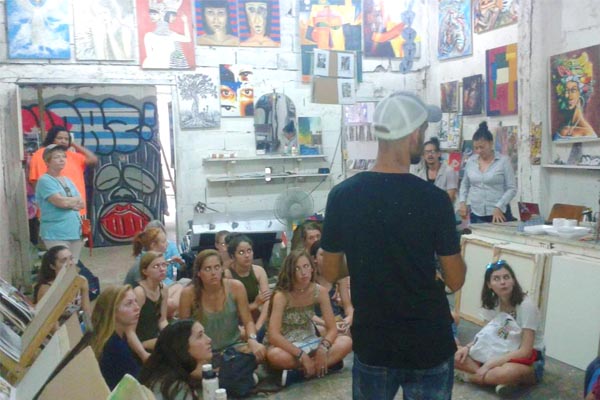
Photo: Taller Comunitario José Martí.
Yoanny Aldaya Ramirez is also part of the collective, and his work must be seen because describing it with words is futile. Carlos Tato Ayress, a Chilean singer/songwriter/painter exiled in Havana during the 1970s, is also a member and has been singing “Nueva Trova” since the collective started. Frida Granados, Osmany Carratala, and Vladimir Morejón are also part of Taller Comunitario.
Keeping the workshops free with limited material for the kids is hard—especially when there are only two art supply shops in Havana that replenish supplies twice a year. Government-favored artists get dibs on the material and leave little for the rest.
Despite their adversities, they produce a lot. Looking around inside the gallery, you get the sense that these artists are devoted to the fruition of their creativity.
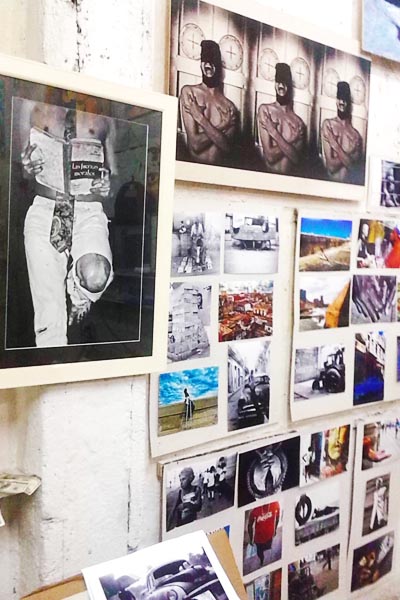
Photo: Taller Comunitario José Martí.
Every month, a group of local artists gathers at Taller Comunitario to talk, drink rum, smoke, and listen to good music (the majority of the time, Aldeanos, Silvito El Libre, Maikel Extremo, Wichy Vedado, or something similar plays in the background).
One day, we heard Tato Ayress playing some anthems from “la Nueva Trova’s” songbook and “De Santiago a La Habana” (From Santiago to Havana), a jam that we’ll never forget. You only fully understand once you’ve been there.
La Fábrica
The night before, we got there late, and the tickets they give at the entrance ran out (I’ll explain why these tickets are important in a bit because they can save you 30 bucks and a whole lot of embarrassment), so we decided to get there at 8:00 p.m.
21:02:32 Late! We arrived at the place the same time we did the night before, but there was no line to get in.
Engrave this in your mind: Inside La Fábrica, you don’t pay for what you consume when you consume it. When you go into the venue and pay your 2 CUCs, they’ll give you a card on which they tally everything you consume. At the end of the night, when you have no idea where you are, whose clothes you’re wearing, or who you are, you’ll have to present that card on your way out to pay your “tab.” If you don’t have the card, tough shit, you’ll have to cough up 30 dollas ’cause they’ll charge you.
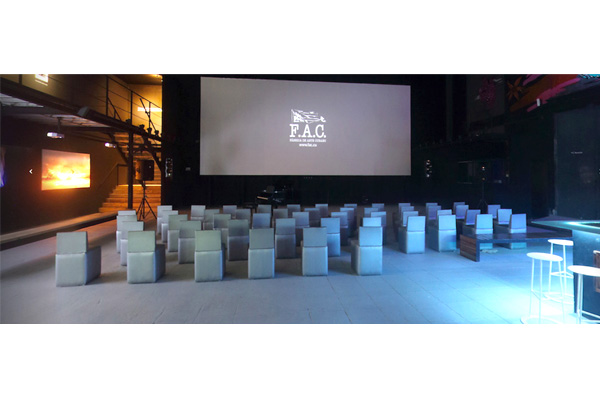
21:05:16 The experience is distributed in different environments (called “naves”), and each showcases the works of local talent like Yomer Montejo. Nave 3 is showing Kid Chocolate, a play that chronicles the life of Eligio Sardiñas Montalvo, the first Cuban boxer to win a world championship.
Everything about this play is impeccable, from the vigorous performance by Jorge Caballero, the score performed by a live band, and the use of the minimally dressed stage. However, the cherry on top is the use of props, specifically a hollow rectangular wooden box Caballero uses as a donkey, washer, shoe-shining chair, a car, and a podium, among other things. It is like a Mary Poppins magical bag where he gets the costumes for the characters he personifies (at least 5); it was genius!
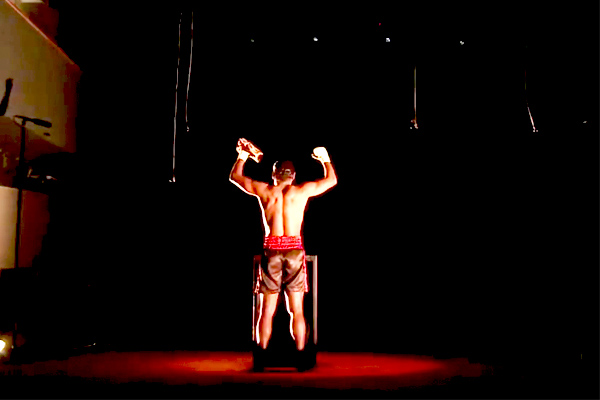
Photo: LaPhoenikera.com
22:11:08 After guzzling our first official hard-hitter glass of rum inside the venue, we went outside to have a cig and hang around one of the many corners this place has. This is where you meet the most interesting characters, like Frank, a Cuban writer who creates children’s books, or Katiushka, a cook and spice collector from Brooklyn, NY.
After inhaling the nicotine-drenched cylinder, we hit the different naves and soaked up in Cuban art. I must confess that I feel a bit overwhelmed, saturated with so much to see.
22:30:04 Did I mention several bars, and all the bartenders are pretty generous with the sauce?
We’re on Nave 1, local DJs Obi and Joan Coffigny are spinnin’ deep house tracks, there’s a shitload of people dancing, and weirdly, it feels like a 90’s rave.
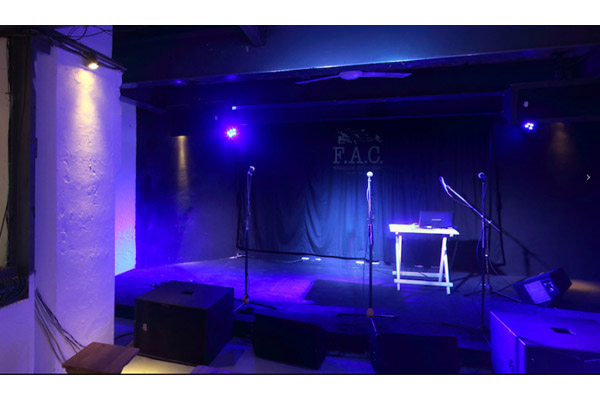
Photo: FAC
23:05:02 After a brief but violent encounter with a wall that messed up my glasses in nave 5, we chill at nave 2 where they have a photography exhibit… I need some recoup time after splitting my cheekbone in half.
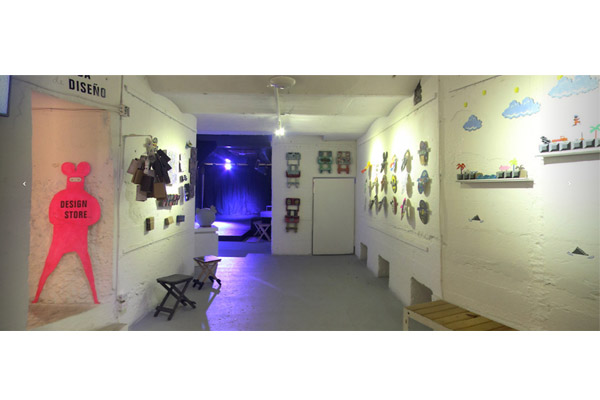
23:21:00 We are 20 minutes late (ok, 21) for Isis Flores’ set on the stage of Nave 4. The blue-light walls are covered with images of Bowie, Hendrix, Moré, Madonna, The Godfather of Soul, and Lionel “Hamp” Hampton, among other music icons. Isis works the crowd with pop anthems that most people enjoy. I’m in the middle of the venue, grinning, looking like a creeper, staring at the crowd, happy everyone seems to be vibing.

Photo: LaPhoenikera.com
01:03:09 We hung out and talked with the peeps from Taller Comunitario (because at La Fábrica, you stumble upon most people you meet during the trip). Frank, the storyteller, and Katiushka, the cook, have come and gone, and people are dancing as if their worries exist elsewhere.
All programmed events are done. Some peeps are dispersed throughout the other naves, confabulating erotic plans, others just dancing to sassy jams.
Quick note: The programming at this place changes every 3 months, what we saw most-likely will change, but you’ll surely experiment some bad-ass art.
Most people believe this is a private venture initiated by musician X Alfonso and other artists when it’s a center of the Cuban Ministry of Culture in conjunction with some Cuban artists. Only the bars are operated by private contractors. The Cuban government knows how to milk the tourists’ tit.
Bellas Artes, Revolution Museum, etc.
Skip the Museo de la Revolución, we didn’t because for most Cubans it is a symbol of oppression, but above all because the average Cuban would rather spend their 100 “pesos revolucionarios” somewhere else and so did we. Also, we didn’t go to the Museum of Rum or the one for chocolate.
If you’re an art junkie and need your fix, then Bellas Artes is your pusher. It has three stories of context and three floors to help you piece out Cuba. Visit it, and you might stumble upon the work of Leandro Soto, a Cuban artist who lived in La Phoenikera for a minute.
The museum is divided into two buildings, one for world art and another for Cuban. We decided to focus on Cuban art. As we said, this place is enormous and has all the different eras of Cuban art history. It was imposing, and we mainly have our favorites, which include Antonia Eiriz, whose anguish-charged creations have palpable darkness and expose the life experience in Cuba. Her style reminded us a little bit of Phoenikero artist Bobby Castañeda.
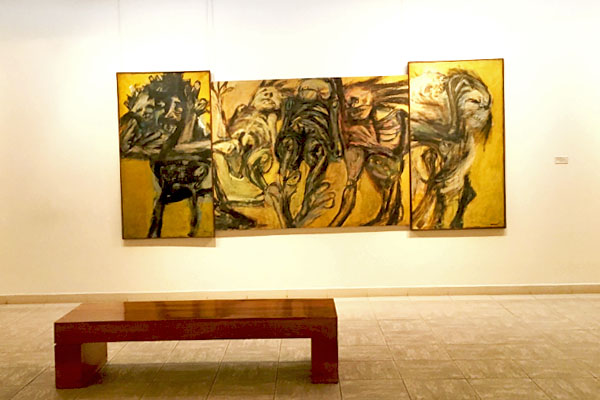
Photo: LaPhoenikera.com
Other artists that made an impact on us were Sergio Martínez, Ángel Acosta León, René Portocarrero, Rubén Torres Llorca, Amilcar Cabral, and the genius Wilfredo Lam. One, however, struck me the most: Servando Cabrera Moreno, an artist with varied styles that linger between the erotic, the human form, and transparency… his art is sensuality.
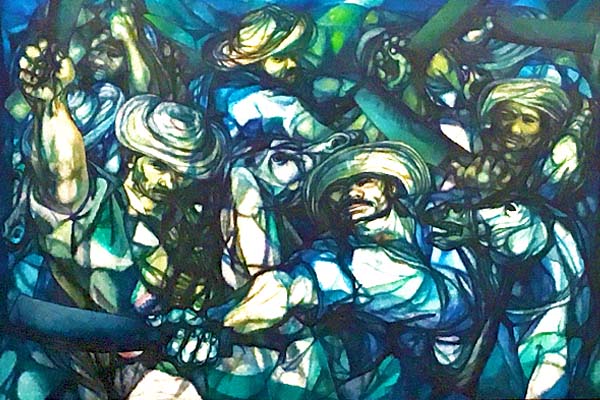
Photo: LaPhoenikera.com
Graffiti
For the piece, we’ll only discuss the work of Cuban street artists, not foreign ones who worked on the island. Yes, Havana has tons of graffiti everywhere. Sometimes, it’s censored, like in the case of El Sexto (@dmmelsexto), and others not so much, like artist Yulier P (@yuliergraffiticuba) and others.

Photo: LaPhoenikera.com
It is provocative to see street art and propaganda competing for space and sometimes coexisting, complementing each other. It is poetic. You have fantastic examples within the works of 2+2=5? (@ttttoe), @DuroHueso, 5stars (@5starsart), Dyoz, Caso, @ScottandDestroy, and @MK89.

Photo: LaPhoenikera.com
Unfortunately, we didn’t meet any female or queer street artists working in Havana, we know of female artists who have worked in the city, but even doing some research it’s hard to find one. If you know of any, please let us know.
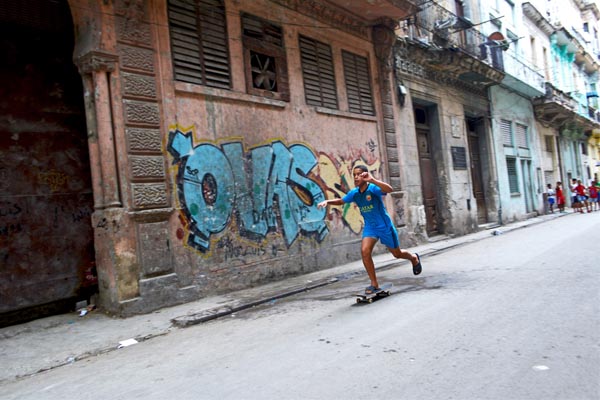
Photo: LaPhoenikera.com
The Internet plays hide and seek at the parks.
Cubans are masterful at workarounds because they’ve had to navigate restrictions at home and a 50-year embargo that has only made the lives of everyday people a moist mound of doo-doo. But they’re resilient, ingenious, and undoubtedly have revolutionary hearts, though they are oppressed.
They’ve also been isolated from the world for decades regarding access to information and technology. Since the government allowed access to the Internet in 2015, things have been slowly changing (as slow as their connection). Cubans are eager for openness and consume interwebs like reggaetón and coffee. It’s just a matter of time before power dynamics start shifting, and the impact of engaging with new technologies can be seen in fashion, the music they listen to, art, the Cuban identity, and how it’s expressed.
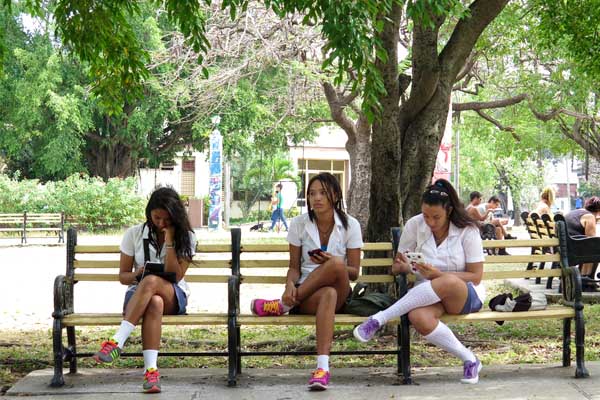
If you walk by Karl Marx Park in Centro Habana, the park on Línea and H (Vedado), Park Estadio Latinoamericano in the Cerro municipality (home of “Los Azules”), or through the dozens of WiFi access points, the majority of people are glued to their screens or blastin’ Insurrecto on their Bluetooth speakers. Even though they’ve only had access for two years, people act like it has been there all along. A girl we met there called WiFi areas zombie parks, and watching Cubans getting their cyber fix is undoubtedly amusing, to say the least. They’re very social and communal, they do everything together: they suffer, cry, laugh, drink, dance and now they browse the webs en masse.
Centro Cultural Bertolt Brecht
This cultural center has awesome programming, and all kinds of peeps meet to have a cup of coffee with a bocadito (ham and cheese sliders), a brewster (Cristal, Bucanero, or Presidente), and just chill. We saw Flechas del Ángel del Olvido in one of its theaters, a play by José Sanchis Sinisterra, adapted by Esther Cardoso Villanueva, and produced by Gaia Teatro de La Habana.
It was a dope interactive show about outside forces’ influence on youth and their future. It was a really solid show in terms of production value and acting.

Photo: LaPhoenikera.com
Also, it was the first place we thought Cubans talked a lot, and we realized it was because they didn’t have their faces glued to a screen. They look at each other when they speak, argue, and communicate.
Roma, the speakeasy of Aguacate
It’s always a good idea to share the location of a speakeasy if you happen to stumble upon one while traveling, and it happens to us quite often. It’s on the rooftop on the fourth floor of Aguacate St. #162 in Habana Vieja. Same, awesome vibes, cool jams by DJ Dark or Kike Wolf, cheap drinks, and an environment assorted with all kinds of weirdos. Hipster alert! If you would like to avoid them, then don’t go. Yes, there are hipsters in Havana, and not all are posers.
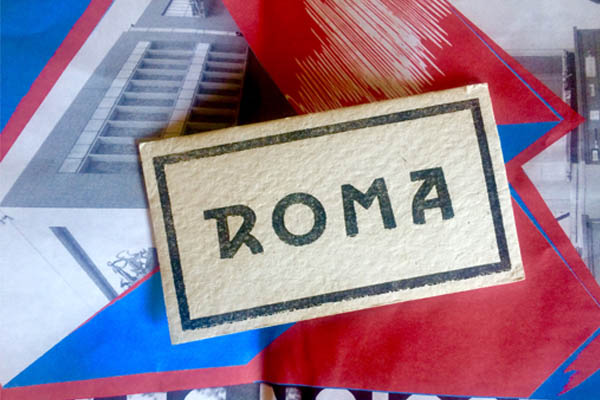
Photo: LaPhoenikera.com
El Submarino
The first night we went to La Fábrica de Arte Cubano, we were turned away because they ran out of tickets. While in line to get into the place, we met two extraordinary twins (Wilbert and William) who asked us to join them at El Submarino Amarillo (The Yellow Submarine) after two fucking gringos and their entitlement tried to cut the line in front of us.
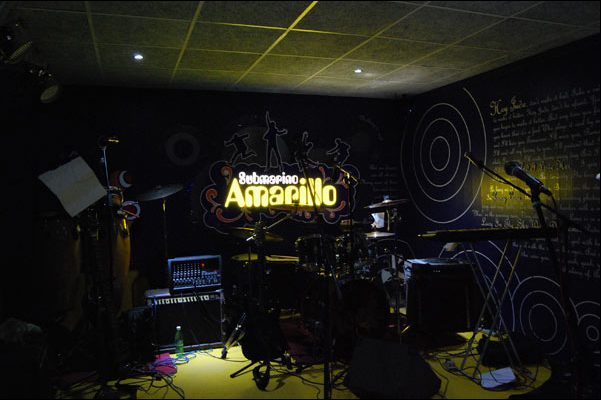
Photo: Submarino Amarillo.
El Submarino is an underground bar that reeks of nostalgia and love for Glam Rock ballads, Aerosmith, and Bon Jovi, among other 70’s and 80’s bands (they only played The Beatles once). It’s a bar not sought out by your average tourist, and fart brains quickly leave after they arrive. Beer and cocktails are cheap; if you add Freddy Mercury Karaoke, you’re set for the night. People who visit this place usually want to avoid salsa, merengue, or any other traditional Caribbean rhythm, especially reggaetón, which is a big no-no.
Café Arcángel
“The best coffee in Havana!” said Miguel Diezcabeza, owner of this tiny gem in Old Havana. Like many places we encountered, we just wanted to spend much more time there. We had the Arcangel breakfast, buss!. It was packed with tons of fruit, eggs, toast, and cafecito, claro está. Their café Cortado is the best among hundreds of other establishments evaluated in Havana.
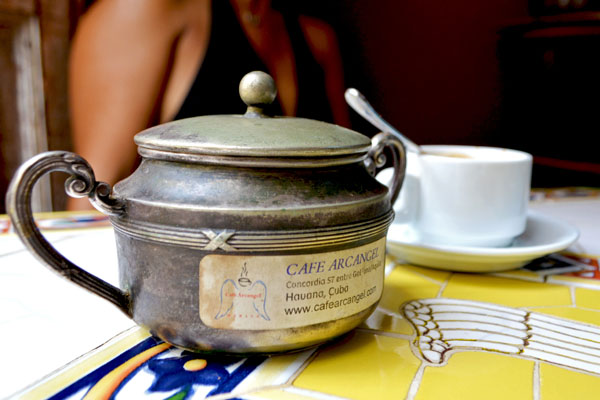
Photo: LaPhoenikera.com
This place is like your tía cachivachera’s house but with taste. It has a few separate areas, and each one has its decor. Where we got seated looked like the entrance hall at your grandma’s house. You know, the one with the little table with the weird adornos and an old-ass phone? Like that. There was one behind us, and the owner called it to brag that it still worked after over eight decades. It rang; it was pretty loud. In the background, an old Columbia Musical Treasuries LP was coming out of a record player.
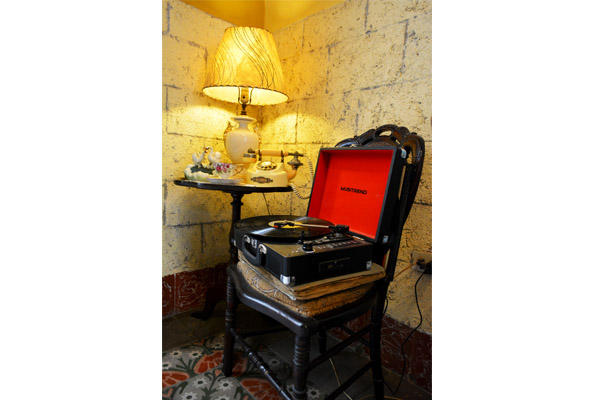
Photo: La Phoenikera.com
Cubans drink a lot of coffee throughout the day (they don’t even look cracked out like people do here; there must be all the processing and terrible handling of the beans). Black brew runs through their veins, and it’s another way to connect with the earth. It’s part of who they are; many of their interactions are while sipping coffee.
The coffee is brewed by Jedi barista Joao Diezcabeza, son of Miguel. He has visited several countries to learn about different coffees, altitudes, and everything there is to know about good ol’ Joe. The result is 27 tastebud-fucking-pupil-dilating0-caffeine-high options on the menu. Cubans are genuinely warm, and we experienced that when we wanted to have our last black brew of the trip and made our way to Arcángel, but they were already closed. When we mentioned wanting our previous “best coffee in Havana,” they opened their business and served us a cafecito.

Photo: LaPhoenikera.com
TRINIDAD
El Mago was born when Fidel croaked
On the inauguration day of El Mago, a coffee shop/bar we found by chance while roaming through the colonial streets of Trinidad, Castro slipped into his wooden pajamas (or so they said he did… a lot of Cubans and we think he was dead long before that).
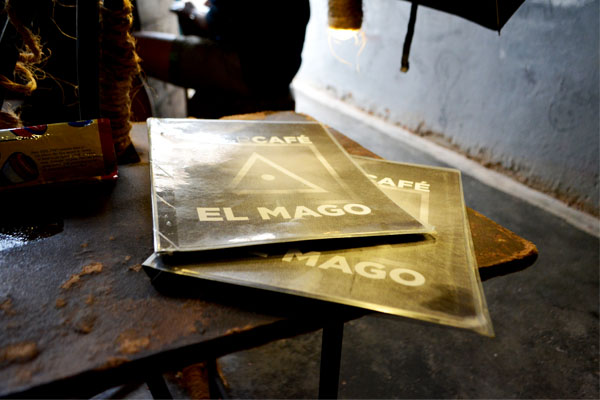
Photo: LaPhoenikera.com
Carlos Duffay, one of the place’s owners, remembers that everyone and their mother were at the opening party. At the climax of the night, the fuzz showed up to cut them off because it was a public display of disrespect to Castro. Carlos and his associates argued that they didn’t know, but the cops still took their license to operate and didn’t give it back until nine days after.
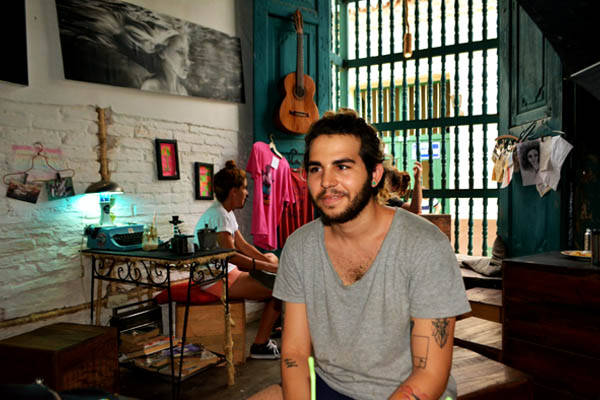
Photo: LaPhoenikera.com
This is a well-thought-out spot that inspires you to do several things at the same time: sit and prattle the whole afternoon, inspect every corner, every photo, and the drawings or writings on the wall. Maybe (like in Cortazar’s Hopscotch), play “cyclops” with a special person, meet someone you haven’t seen in a long time, or simply—which is my case—people watch.
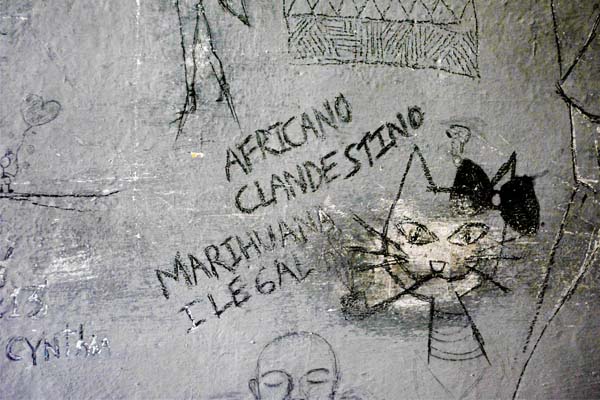
Photo: LaPhoenikera.com
Meeting Carlos and Melia was pretty dope. Carlos because he’s a young artist/entrepreneur making his mark in his city (it’s the only place where you can hear EDM and reggaetón is banned). He’s transparent, loves to talk, and shares his humanity. Melia is La Maga, she’s the most filter-less person I’ve met in a while, and her sex stories are fucking pillars! We learned from her that Cuban women have the “whore seal” on their foreheads because the government has made a point to export that vision of its women.
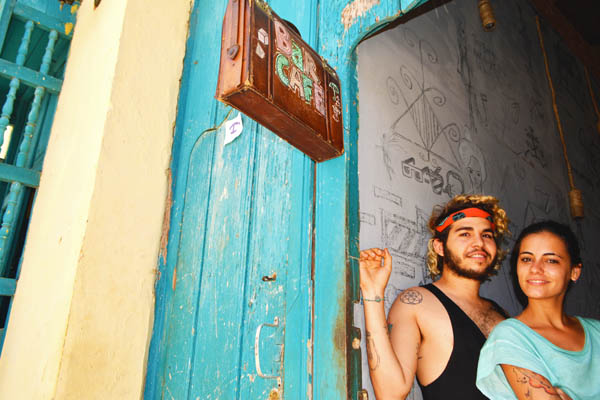
Photo: LaPheonikera.com
El Mago is the concept of a group of friends (Laura Vaillant, Lyhan Arango, and Yilien Moje) that started in 2016 with a few hundred dollars borrowed from friends and family. Two things on the menu make your eyes roll back with ecstasy: the Baracoa coffee, a multilevel swirl of frappéd yummy black brew with chocolate, and the Canchánchara, a concoction made of honey, lime juice, and aguardiente that initially the Mambises used as a remedy for respiratory ailments. My sickness was sobriety, so I had a few to make sure I didn’t get too sick. The few I had had a slight variation… ice and soda water.
Carlos and Melia recommended La Botija for dinner (order an Ensalada Campesina, it’s super fucking weird, and share the spaghetti if you request one, it’s ginormous!), then we would convene later at La Cueva, a cave of wonders where one practices all kinds of deeds. Melia hangs out at the café and is Carlos’ roomie; she’s a trained violinist and waits tables at a fancy joint in Trinidad. Carlos traded engineering for photography and makes the meanest Chancháncara ever! We had a genuine connection, but there was nothing transactional about it. There was a lot of learning, especially for us since we’re used to discard things, even good ideas.
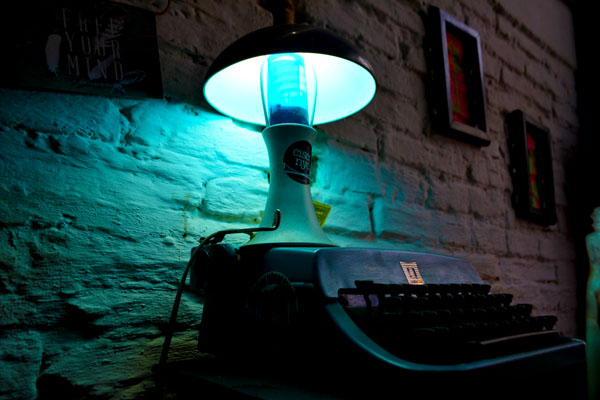
Photo: LaPhoenikera.com
They mentioned that murals and street art aren’t accepted as much, although there are some around the city. Carlos says that murals are frequently covered because the city is still very conservative. There are murals, but a mediocre layer of paint covers plenty.
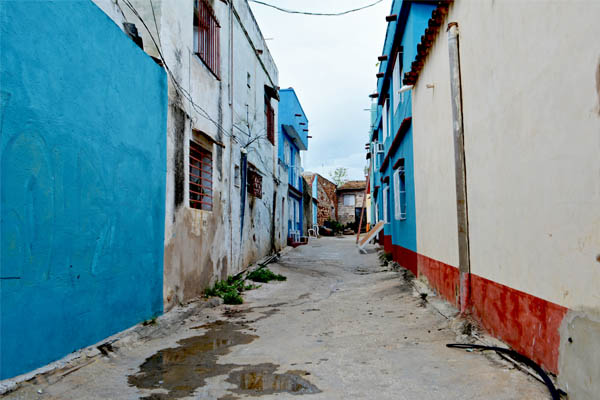
Photo: LaPhoenikera.com
La Cueva
When in Trinidad, La Cueva is a must. This nest of hedonism is inside a system of caves where people drink, grind until they wear out, and leave their shoe soles on the dance floor (sometimes also their decency, as I did).
To get to La Cueva, you’ll need to hike a bit because it’s on a mountain. On your way up, there are small impromptu stands that sell Cancháncharas for 1,25 CUCs, which is less than half the price inside the club for the same drink. So take advantage of that.
La Bodeguita del Medio
Yes, go to this place only to take advantage of their insane Happy Hour (2 mojitos for $2.50). Yes, they say it was Hemingway’s bar, but weren’t they all at some point? That old fucker was a party animal! Maybe you’ll even have Rey Fabré y su Grupo Original playing to liven up your mojito binge.
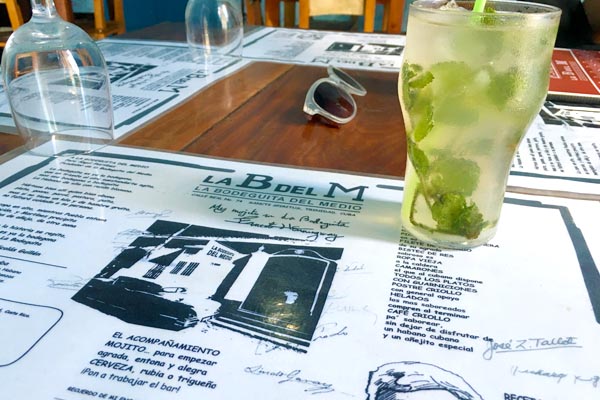
Photo: LaPhoenikera.com
Trinidad is also called “the museum city,” it has several options to visit (Museo de Historia Municipal, Museo de Arqueología, Museo Romántico, Museo de Arquitectura Colonial, etc.).
La Casa de la Música
Yeah, this one, too, but it’s just to warm up the party engines so you can then go and discover what the city has to offer. It’s a cool place to dance outdoors and watch the best and worst dance moves ever.
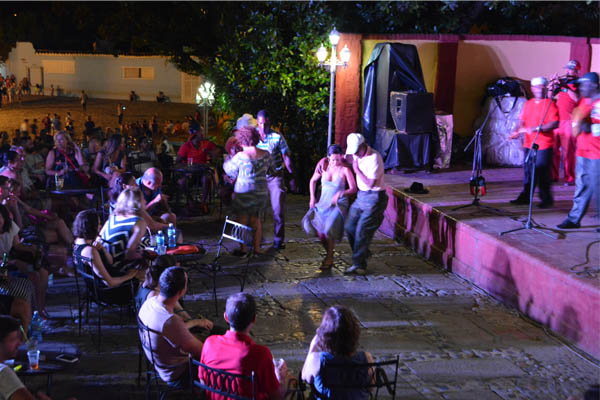
Photo: LaPhoenikera.com
In short
Cuba is what you are inside, and you find what you seek. If you take bad juju and you’re stuck up, then most likely, that’s what you’ll get. Cuba is a mirror that reflects intentions, a place where its citizens coexist with “the damned circumstance of water everywhere.”
If the purpose is to be a tourist à la Houellebecq, there will be those DTF. If you want to avoid crowds and just enjoy a self-discovery trip, you can do that too (with the occasional interaction that will help you realize that Cubans approach you because they want to ask for or offer you something, or in rare instances, simply because you intrigue them).
Cuba is everything you heard, and people have told you, but it is also what they didn’t. Yes, there are impromptu parties in the middle of the street while it’s raining, and music can be heard everywhere. People are joyous because they choose cheerfulness instead of the alternative.
No, not everything is Son, Chachachá, Guaguancó, Rumba or Mambo. Guantanamera is usually just an echo overpowered by a Chocolate Nestlé jam blastin’ from a modified 55′ Bell Air with a Subaru engine.
Yes, there are hot people, but isn’t that the case in most places? Isn’t there always that person who makes you look twice? Get the fuck over it.
Oh, the Cuban Sandwich (or Medianoche) that I have wanted to try in Cuba since I was 6 years old, the one with ham, roast pork, Swiss cheese, pickles, and mustard—no, it’s not better in Cuba.






